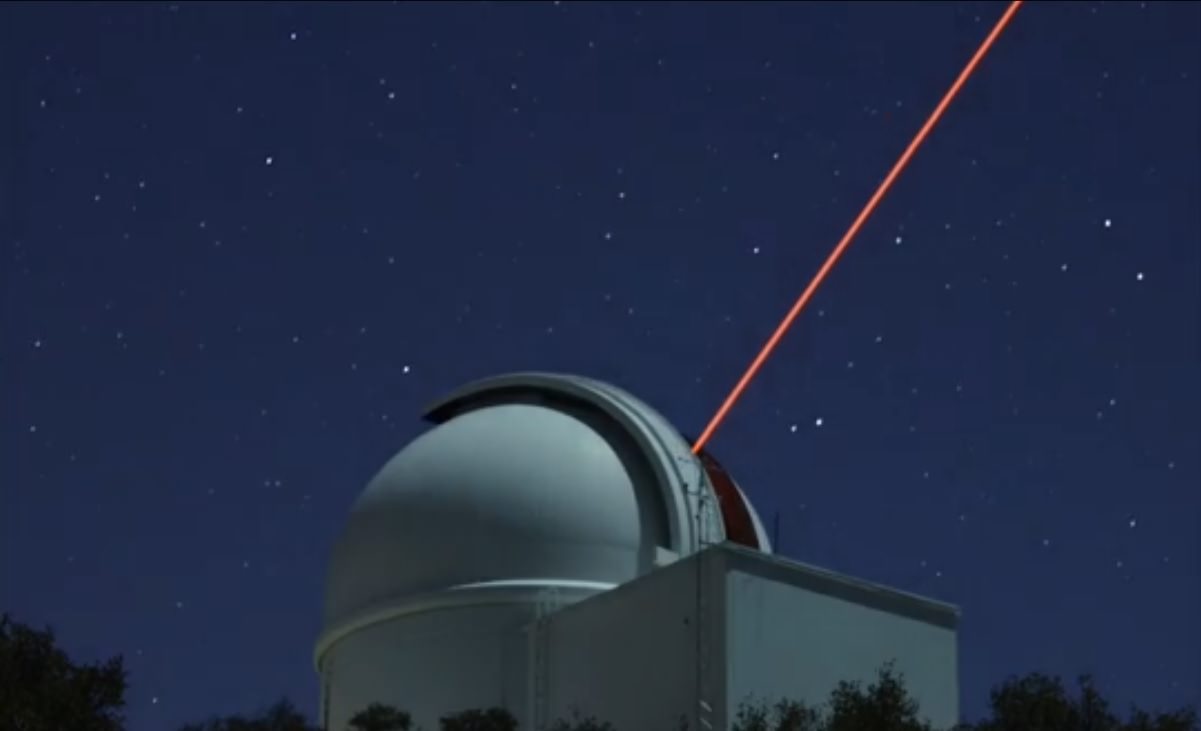There’s a group of people probing exoplanets with a laser robot, and the results are showing a few surprises. Specifically, a survey of “hot Jupiters” — the huge gas giants in tight orbits around their parent stars — shows that they are more than three times likely to be found in double star systems than other kinds of exoplanets.
The robotic laser adaptive optics system, which is installed on California’s Palomar Observatory’s 1.5-meter telescope, also discovered double star systems that each have their own planetary systems, rather than sharing one.
“We’re using Robo-AO’s extreme efficiency to survey in exquisite detail all of the candidate exoplanet host stars that have been discovered by NASA’s Kepler mission,” stated Christoph Baranec, a researcher at the University of Hawaii at Manoa’s Institute for Astronomy who led a paper on Robo-AO results.
“While Kepler has an unrivaled ability to discover exoplanets that pass between us and their host star, it comes at the price of reduced image quality, and that’s where Robo-AO excels.”
Lasers and adaptive optics are commonly used to account for changes in the atmosphere. A computer system helps the mirror change shape as the atmosphere swirls, providing clearer images for astronomers.
The Robo-AO survey cited looked at 715 candidate exoplanet systems that were first tracked down by NASA’s planet-hunting Kepler space telescope. The team is now planning to tackle the rest of the 4,000 Kepler planet candidate hosts.
Results from Robo-AO have been published in The Astrophysical Journal, here and here. You can also see a preprint version of one of these journal articles here.


Misleading title: this telescope is looking at stars, not planets. Even with optimal AO, a 1.5m telescope isn’t exactly in the range for exoplanet imaging.
“While Kepler has an unrivaled ability to discover exoplanets that pass between us and their host star, it comes at the price of reduced image quality, and that’s where Robo-AO excels.” This is kind of meaningless: Kepler doesn’t make ‘images’.
From the Arxiv abstract:
“The Robo-AO Kepler Planetary Candidate Survey is designed to observe every Kepler planet candidate HOST STAR with laser adaptive optics imaging to search for blended nearby STARS, which may be physically associated companions and/or responsible for transit false positives. In this paper we present the results from the 2012 observing season, searching for STARS close to 715 representative Kepler planet candidate hosts. We find 53 companions, 44 of which are new discoveries.” (my caps)
Hi Manu,
Quoting:
“While Kepler has an unrivaled ability to discover exoplanets that pass between us and their host star, it comes at the price of reduced image quality, and that’s where Robo-AO excels.” This is kind of meaningless: Kepler doesn’t make ‘images’.
Not sure what you meant by …Kepler doesn’t make ‘images’… Being a telescope with a very high megapixel ccd array, it does produce images (when scientist press the button 😉 However I do agree that Kepler never discovered even one exoplanet… The scientists did! By analysing the transit data (light curve/profiles)…
I think I know what you were taking issue with.. By over-simplifying for lay-folk and saying ‘… it comes at the price of reduced image quality..’ When the article could have said … The wide-field (taking in a large area of view) of Kepler results in pinpoint images of stars only suited to observing planets by transit method which can be less accurate for determining protoplanetary mass than radial velocity or gravitational lensing methods (looking at blocked sunlight vs looking at stars wobbling on their axis or shift in brightness from lensing)…